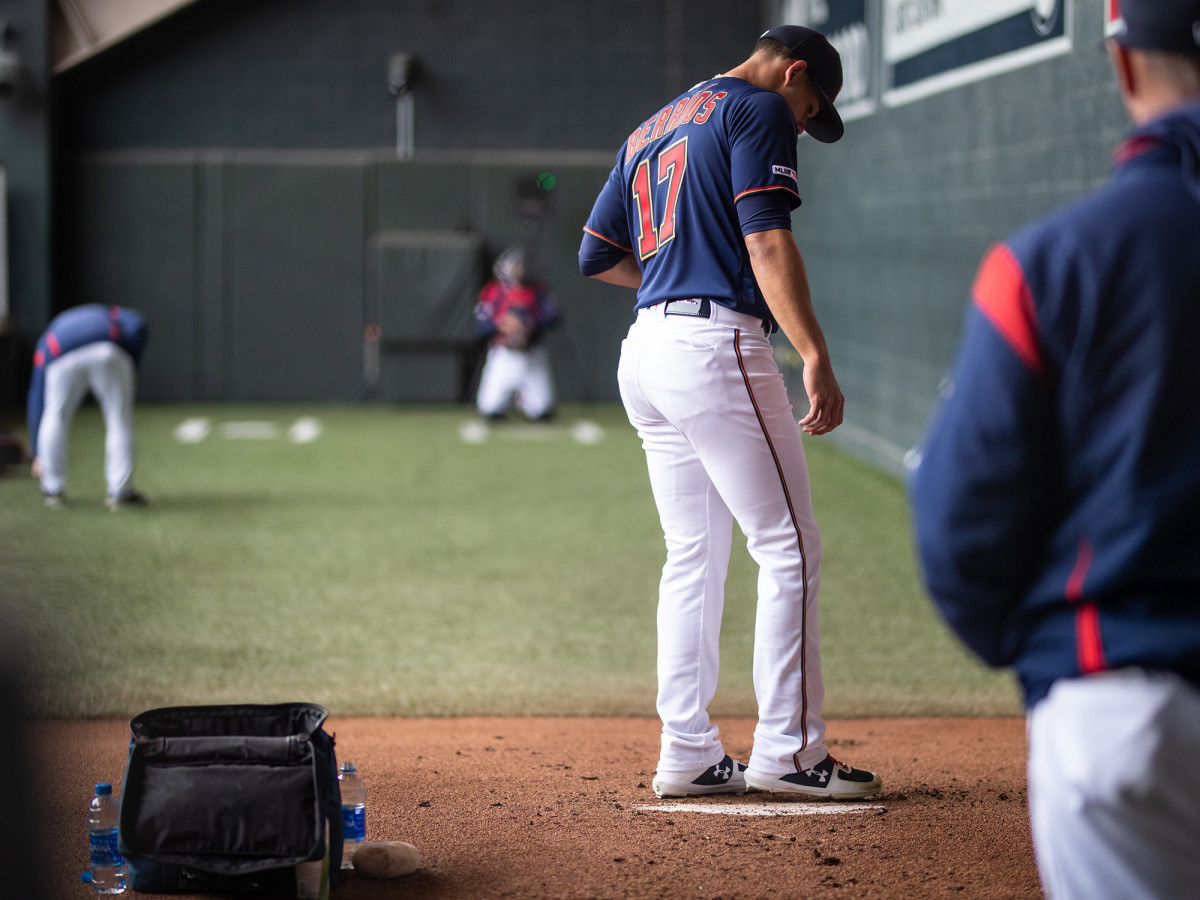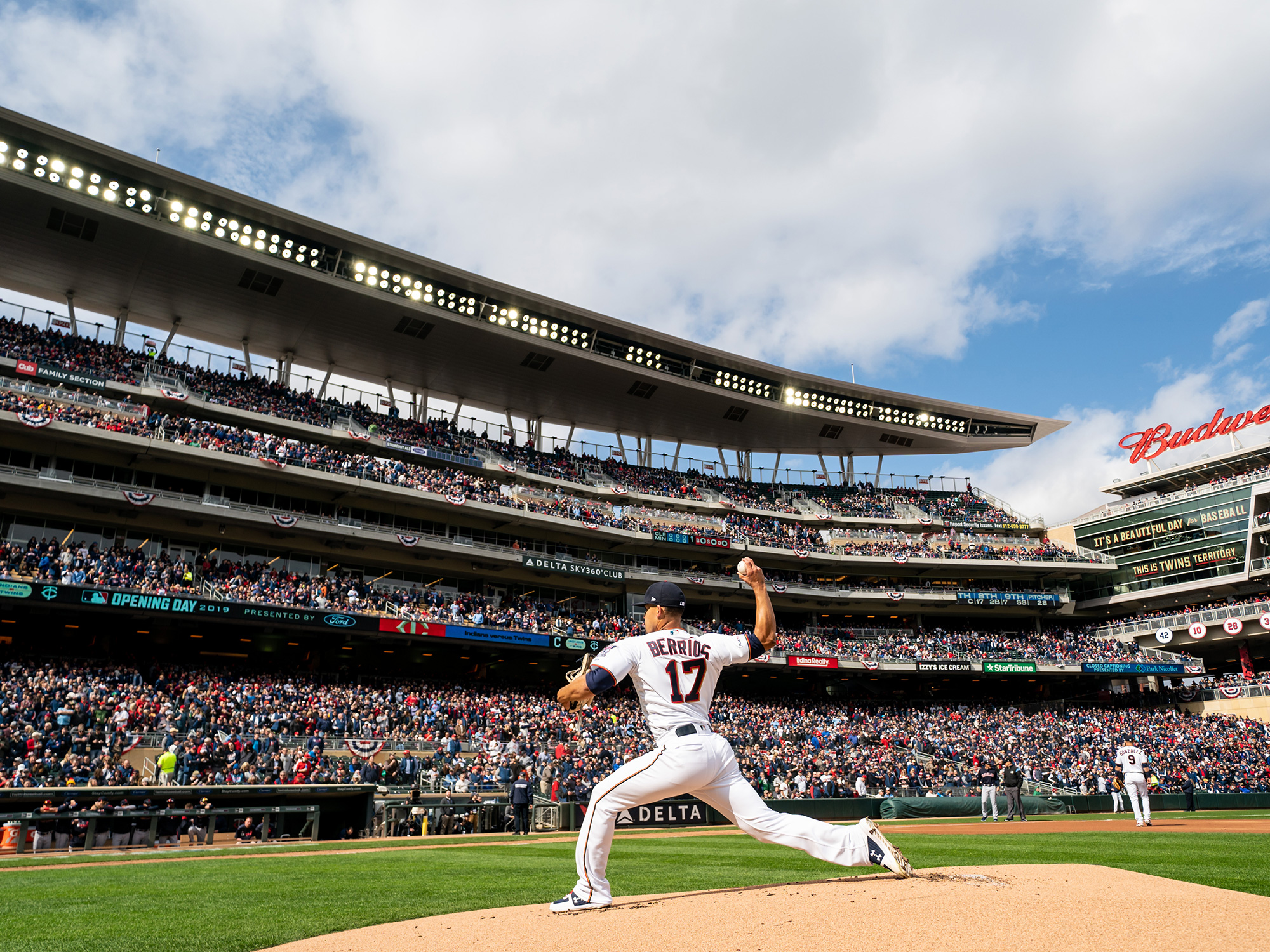How MLB's Biggest Surprise Team Transformed Its Pitching Culture

With the best record in baseball, the Minnesota Twins are the biggest surprise of the first quarter of the baseball season, especially with the way they’ve pitched. They’ve cut their ERA from 4.50 last year to 3.74 this year. Their rotation (21-9) has more wins than any rotation in baseball.
How they’ve done it shouldn’t be a surprise. Minnesota jumped heavily into an analytic-based approach to pitching. The advances in technology and data have weighed much more heavily on the run prevention side than the run production side, which is why it is harder to get a hit today than any time in the past 110 years, except for 1967 and 1968.
By changing their culture from a mom-and-pop shop to a high-tech startup, the Twins–while spending just $5.3 million on free agent pitching–have reaped the rewards of analytics with essentially the same personnel.
“It all starts with the individual programs Wes Johnson and Jeremy Hefner developed for our pitchers,” said GM Thad Levine, referring to the pitching coach and assistant pitching coach. “The staff has worked seamlessly with the analytics department in a total collaborative effort. Hitting and pitching coaches’ appetite for collaboration exists in the offseason but sometimes when they get into the fight of the season and the ominous specter of job security based on results hangs over them they retreat and want to reduce the input around them.
“These guys are always asking for more. I can’t underscore enough how Wes and Jeremy have created conviction with our pitchers by building programs to help these guys.”
The Twins have jumped out to a 25-14 start. What does that mean? Over the past four seasons eight teams have won 25 of their first 39 games. All eight made the playoffs, including each of the past four world champions.
Yes, the Twins are slugging home runs at a ridiculous rate even Levine admits probably is not sustainable. You knew this team was going to hit. But the way they’ve pitched? Minnesota is allowing less than four runs per game for the first time in the DH era. The team that was infamous for “pitching to contact” (the Twins ranked among the three worst teams in strikeout rate every year from 2011-14) is about league average when it comes to whiffs.
Give credit to president Derek Falvey and Levine for breaking norms when it came to putting a staff together. Johnson, 47, last at the University of Arkansas, is the first major league pitching coach hired directly out of college. Hefner is only 33. He spent two years as an advance scout after retiring as a pitcher.

The Twins also hired 65-year-old Bill Evers, who never played in the majors, to bring his pitch-framing magic from the Rays. (Catcher Mitch Garver has improved tremendously in that skill.) And they hired the youngest manager in the majors, Rocco Baldelli, 37, a guy with no managing experience.
Johnson was using spin rates and TrackMan data as far back as 2012 at Dallas Baptist. He built a reputation on helping college pitchers gain velocity. He also has a background in kinesiology.
“It’s something that didn’t give us pause,” Levine said about hiring a pitching coach who had never worked with professional pitchers. “His credentials were so outstanding. In practice, he did work with a number of pitchers who were drafted.”
Johnson’s greatest impact with the Twins is found in the granular details of pitch sequencing and game-planning. (It’s much harder to develop velocity spikes in major league pitchers than it is for still-developing college pitchers.)
Compared to last year, Twins pitchers are not throwing much harder (average four-seam velocity is up 0.2 mph to 92.7, still below league average), are not spinning the ball any faster (the staff average spin rate, 2,163, is down slightly and is the lowest in the majors) and they are a middle-of-the-pack team as far as fastball usage (59%, about the same as last year).
So how to explain what’s going on? Twins pitchers are throwing more confidently and living in the strike zone. They rose from 13th in the league last year on first-pitch strikes to second this year, from 14th in strike percentage to fifth, and from 13th in walk rate to fifth. That’s “the conviction” Levine credited for their improvement.
“The marriage between our staff with our information department has become so much more robust,” Levine said, “that we have a heightened feeling of who can be more successful in incremental ways against hitting. It really is night and day [compared to last year]. We’re improving because we have even more talent in the analytic space but also because the coaching staff has pushed them. It is not a one-way conversation.”
It took Minnesota starters 74 games last year to win 21 games. This year they did it in almost half the time (38). Three-fifths of the rotation hasn’t changed: José Berríos, Jake Odorizzi and Kyle Gibson. The additions are Martín Pérez, who posted two wins and a 6.22 ERA last year in Texas, and Michael Pineda, who didn’t pitch at all last year while recovering from Tommy John surgery.

Pineda still hasn’t regained full arm strength, but the other four starters are glowing endorsements of how the change in pitching philosophy has provided immediate dividends:
• Pérez: His default way of pitching was old school: “keep the ball down.” That method doesn’t work in the game today, not against swings designed to maximize launch angle and the sinker being the easiest pitch to hit. So Pérez cut his sinker usage in half, regained two miles per hour to his four-seam fastball just by throwing fewer of those sinkers, turned his slider into a cutter, which has become his most-used and best pitch (.100 batting average against after his first 236 cutters), and now works the ball up and down in the zone.
• Odorizzi: He’s learned to throw more curveballs (double the rate of any previous year) and one of the game’s foremost practitioners of throwing elevated fastballs is now working up and down. Last year Odorizzi had the second-highest average pitch height among Major League starters. This year he is 22nd.
• Berríos: With experience and game-planning, Berríos has learned to trust his stuff by pounding the strike zone. Berríos has improved his strike percentage every season. This year he is the third best strike thrower among all starters in the league (68%). He is throwing his curveball more when behind in the count.
• Gibson: He has made a massive improvement in his percentage of first-pitch strikes (58% to 67%). That’s allowed him to post the best strikeout and walk rates of his career.
Those four pitchers were 31-41 last year and, entering the season, were nobody’s idea of an elite rotation. With a new coaching staff, the same four pitchers are 19-4.
The entire rotation is between 25 and 31 years old–the sweet spot of pitching–and all of them have made 32 starts in a season, so innings limits do not apply.
“They’re all veteran pitchers across the board,” Levine said. “We don’t see anything fluke-ish in our minds.
“The success of this team is going to hinge upon just our starting rotation keeping us in the game. So far they’ve done more than that. If they continue to be on the positive side of a competitive advantage, we have a good chance of competing deep into the season.”
Under new pitching coach Wes Johnson, the Twins aren’t throwing harder or spinning the ball faster or throwing a lot fewer fastballs:
| 2019 (League Rank) | 2018 |
|---|---|---|
Average Velocity | 87.7 (13) | 88.4 (8) |
Spin Rate | 2,162 (15) | 2,171 (13) |
Fastball Usage | 58.8% (7) | 59.6% (6) |
The difference is that the Twins are pitching much more aggressively:
| 2019 (League Rank) | 2018 |
|---|---|---|
First-Pitch Strikes | 62.7% (2) | 58.4% (13) |
Strike Percentage | 64.3% (3) | 62.6% (14) |
Walk Rate | 7.9% (3) | 9.1% (13) |
Strikeout Rate | 23.2% (6) | 21.9% (8) |
Runs Per Game | 3.97 (4) | 4.78 (9) |
